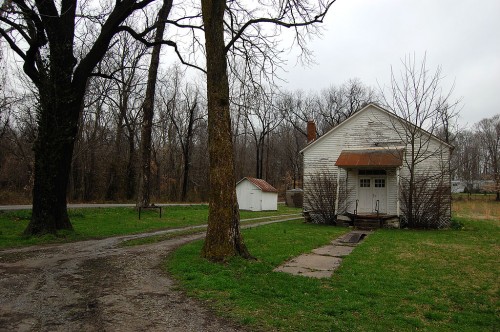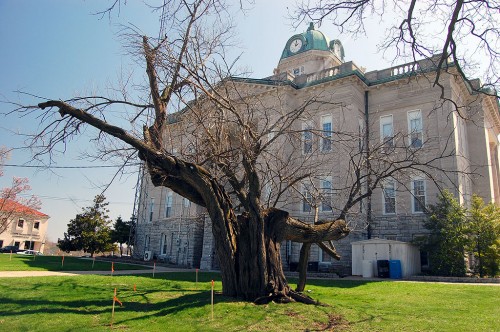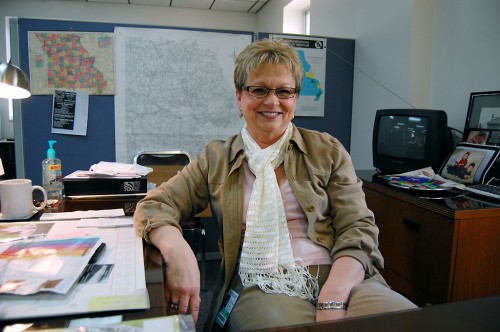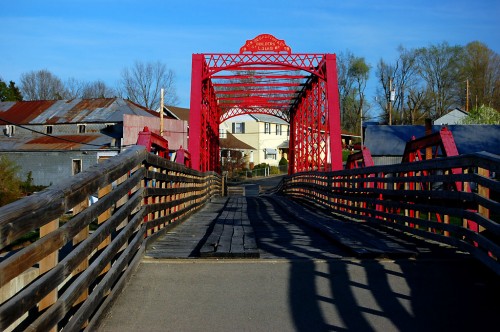 The Missourian ran a story this morning about a man who died jumping off the Old Appleton Bridge. A reader asked if that was the same Castor River bridge I showed kids jumping off in another post.
The Missourian ran a story this morning about a man who died jumping off the Old Appleton Bridge. A reader asked if that was the same Castor River bridge I showed kids jumping off in another post.
The answer is, “No.” Wrong body of water, wrong bridge. The caller who reported the drowning said the man had jumped off the “red bridge” and had not surfaced. There used to be a water-powered mill just downstream of this bridge. A dam created a deep pool of water that made a good swimming hole.
I’ll write about the Old Appleton bridges later. The bridge on Highway 61 that replaced the “red bridge” was a death trap that The Missourian campaigned hard to get replaced. I spent a lot of time shooting wrecks there.
Silver Dollar Tavern
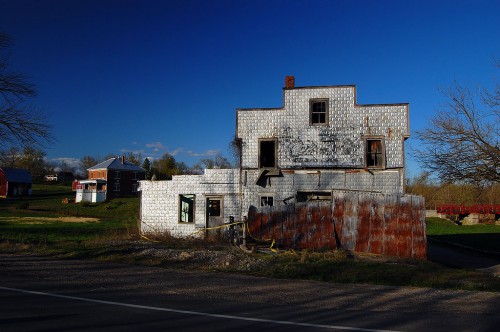 When we slowed down in Old Appleton this spring, I figured I’d better shoot the landmark Silver Dollar Tavern while it was still – barely – standing. The local gathering place had pool tables, a dance floor and a bar. I’ve read that a lot of Blues music was played there.
When we slowed down in Old Appleton this spring, I figured I’d better shoot the landmark Silver Dollar Tavern while it was still – barely – standing. The local gathering place had pool tables, a dance floor and a bar. I’ve read that a lot of Blues music was played there.
I don’t know how old the building is. A Google search of The Missourian’s archives popped up a story from 1948, so it’s at least as old as I am. I’m going to throw in a bunch of stories that ran in the Old Appleton News column over the years. Most of them were written by Rip Schnurbusch.
District News Editor herds stringers
 One of my many jobs at The Missourian was District News Editor, riding herd over our country correspondents, or stringers, as they were called. They got the name of “stringers” because they were paid by the column inch and it was easier to measure their copy with a string at the end of the pay period instead of using a ruler and having to do math.
One of my many jobs at The Missourian was District News Editor, riding herd over our country correspondents, or stringers, as they were called. They got the name of “stringers” because they were paid by the column inch and it was easier to measure their copy with a string at the end of the pay period instead of using a ruler and having to do math.
Being a young, serious journalist, I would edit their copy with a meat axe. One day, Editor John Blue called me in and said to cut them some slack. “Not much happens in these little towns, so they make do the best they can. Besides, their little asides are what make their columns fun to read.”
Non-linear journalism
 Now that I’ve become a non-linear journalist myself, I can appreciate what jBlue was telling me. I’ve grown to appreciate Rip and Anne Withers from Delta and Anne Lattimore from Charleston in my old age, even though they drove me crazy when I had to read their hen scratch copy. To make it worse, they would send the same stories to three or four papers; you were lucky if you got the TOP copy and not the fourth carbon.
Now that I’ve become a non-linear journalist myself, I can appreciate what jBlue was telling me. I’ve grown to appreciate Rip and Anne Withers from Delta and Anne Lattimore from Charleston in my old age, even though they drove me crazy when I had to read their hen scratch copy. To make it worse, they would send the same stories to three or four papers; you were lucky if you got the TOP copy and not the fourth carbon.
I just discovered a whole manila folder of stringer copy marked “Funny File.” We’ll save it for another time.
This one is too good not to share. It illustrates the news judgment of my stringers: A singing convention was held at the Mt. Calvary Baptist Church in Parma Sunday afternoon with feature singers of the Campbell Trio of Gideon. The convention was interrupted by a fire which destroyed the home of John Barker. [Emphasis mine. Mind you, this wasn’t even the TOP item.]
A Smattering of Old Appleton News
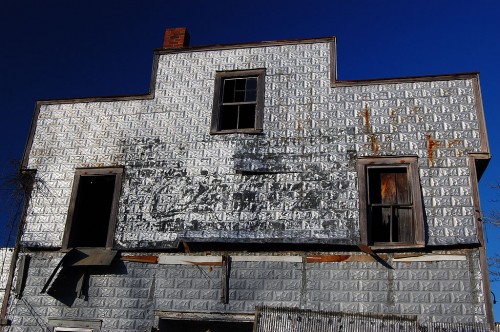
- June 23, 1948 – Jean Balsmann, proprietor of the Silver Dollar Tavern, has added ice cream to his stock.
- April 20, 1949 – Barney Balsmann, owner of the Silver Dollar Tavern, and his son, Gene, who operates the tavern, are building an addition to the building which will house several pool tables.
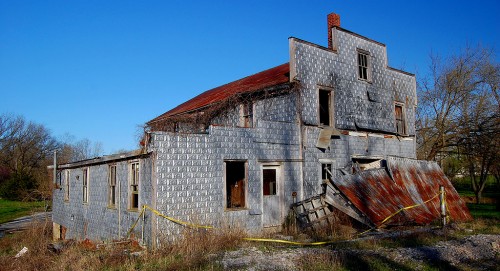
- May 19, 1948 – A chicken fry was held Tuesday night at Silver Dollar Tavern for young men of the community.
- F.C. Sewing recently purchased a sow and seven pigs from Barney Balsmann.
- Oct. 13, 1948 – Miss Verda Weisbrod was honored at a miscellaneous shower last week at the Silver Dollar Tavern given by Mrs. Hugo Triller, Marilyn Weisbod and Betty J. Schnurbusch.
- A tree felled last weekend by Millard Esters and Edward Jarigan killed a raccoon which had holed up in the tree. The impact of the tree, which was to be used to firewood, killed the animal.
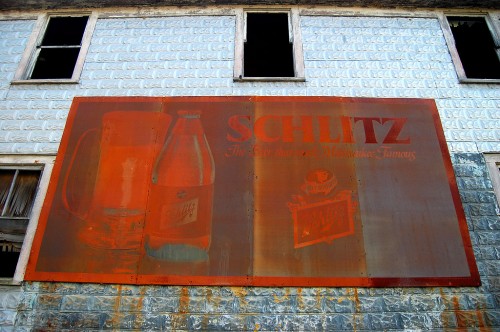
- May 16, 1962 – The Perry County Saddle Club held its monthly meeting Monday night at the Silver Dollar Tavern with a good attendance. Refreshments were served.
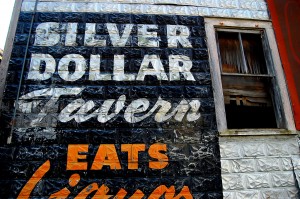
- March 21, 1963 – Classified ad: SILVER DOLLAR TAVERN: For sale or lease. See or contact Gene Balsman, Perryville, MO.
- March 31, 1965 – The Silver Dollar Tavern changed hands over the weekend, the new owner being Van Ferral.
- April 30, 1970 – There is one less pony in town. The Edgar Blechle children lost one of their pet ponies this past week when the animal got loose, ran on the highway, and was hit by a small van truck belonging to the Saveway Oil Co. of Scott City.

- Mr. and Mrs. B.C. Humphrey moved from the Wally Unterreiner home into the former Schaeffer home over the weekend. Mr. Humphrey is employed at the Farmers Limestone Co. as a heavy equipment operator, and Mrs. Humphrey is a cook at the Silver Dollar Tavern. [I wonder how long they had to live there before their domicile would be called the Humphrey home?]
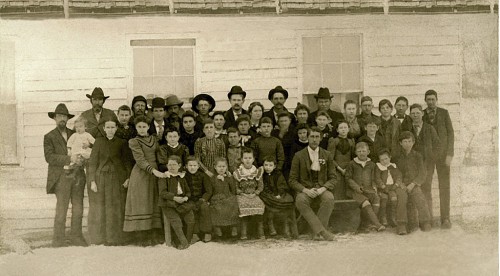 Question from Bob Reese
Question from Bob Reese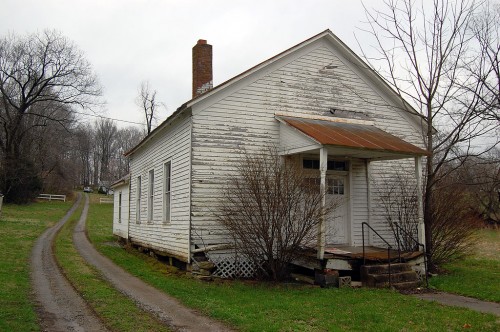 I’m on the road and don’t have access to any photos that show another angle of the Pecan Grove School, but both buildings look like they have three windows. The roof on the photo Bob sent looks like wood shake; I think I remember Pecan Grove as being tin, but I’m not sure. It could have been replaced over its 100-plus year life.
I’m on the road and don’t have access to any photos that show another angle of the Pecan Grove School, but both buildings look like they have three windows. The roof on the photo Bob sent looks like wood shake; I think I remember Pecan Grove as being tin, but I’m not sure. It could have been replaced over its 100-plus year life.
